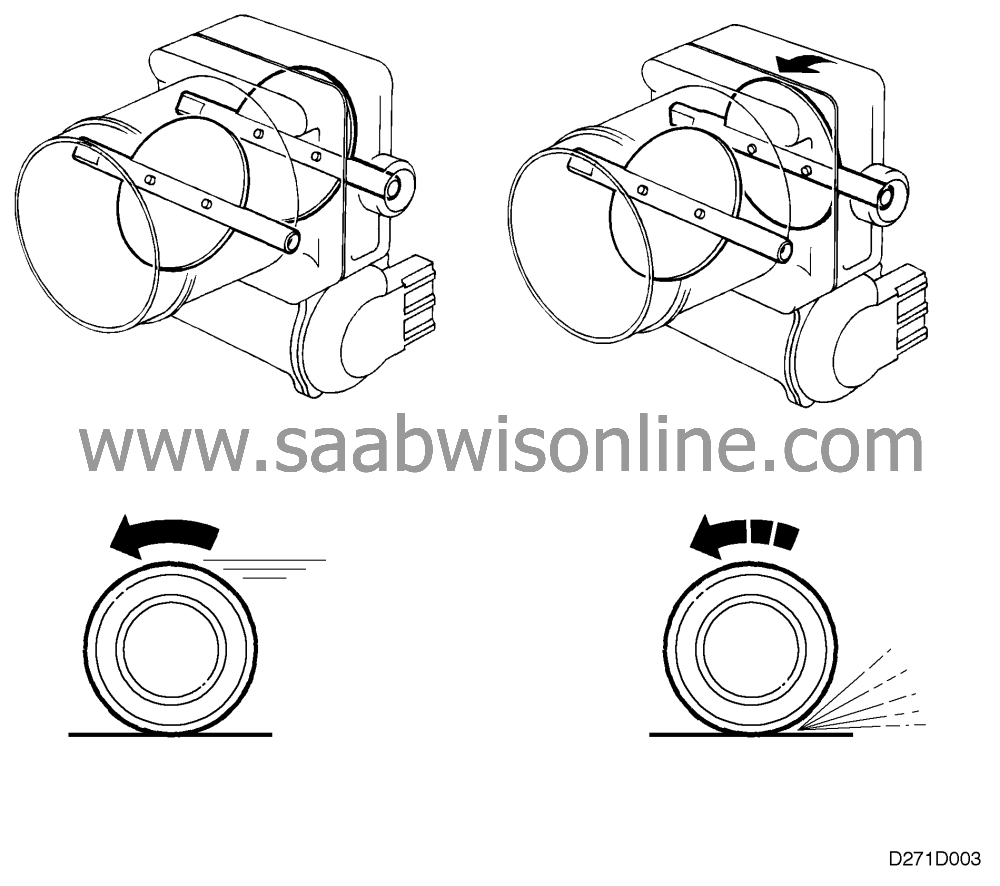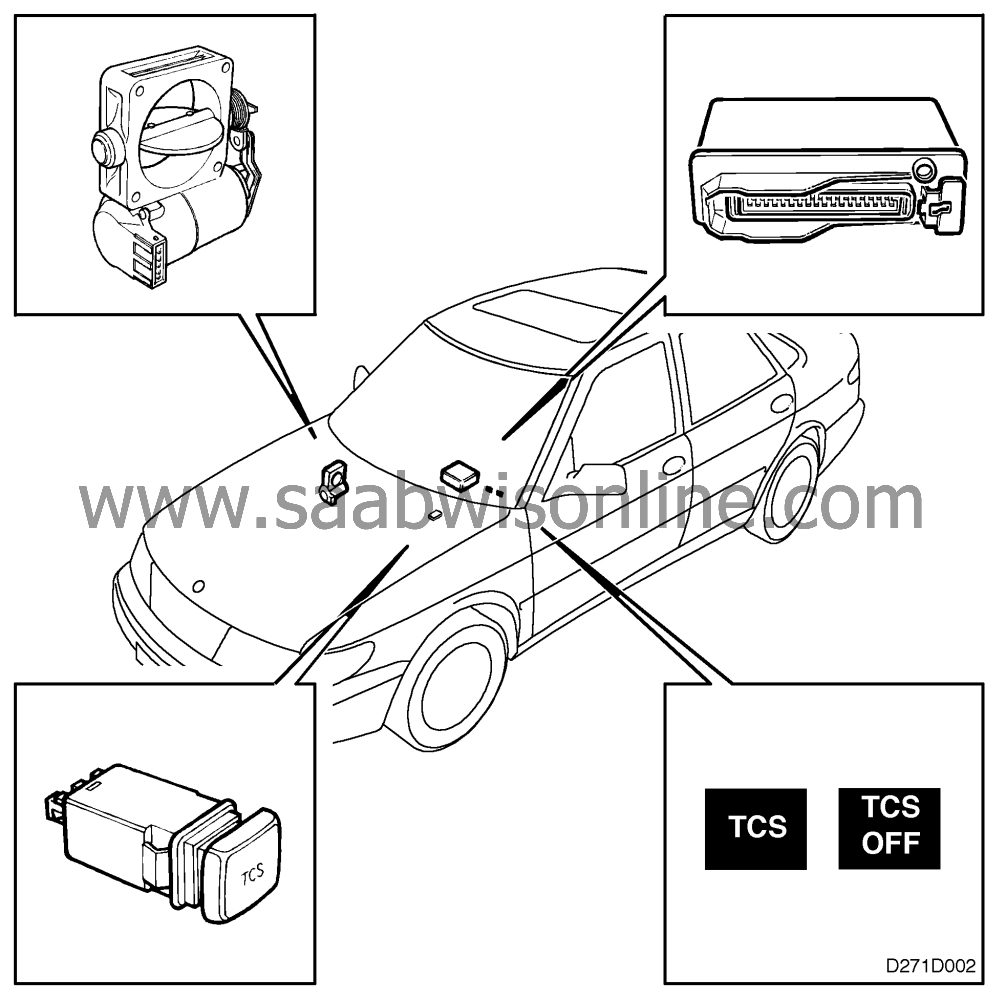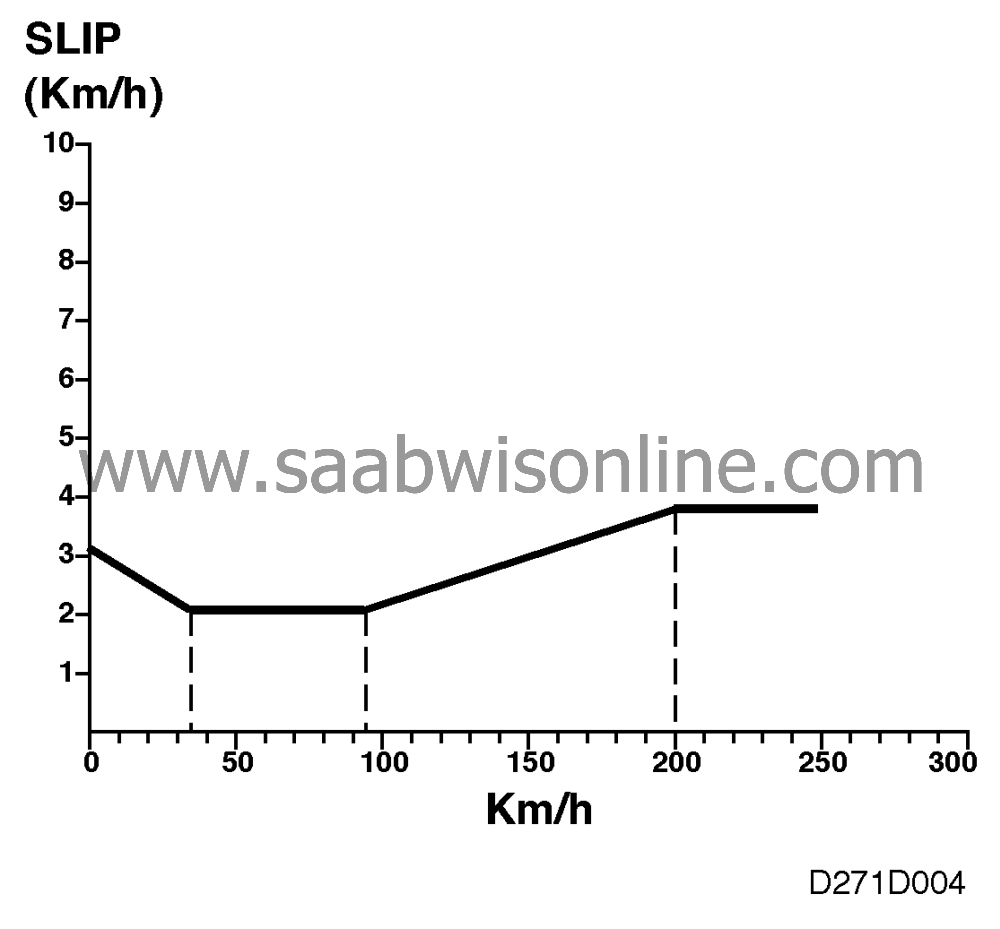ON/OFF switch
The Traction Control System (TCS) prevents uncontrolled wheelspin during
heavy acceleration and on icy or slippery road surfaces.
The TCS for M94 Saab V6 cars is a new Saab system based on the use of two throttle
butterflies. It is also called the
Twin-Throttle
System (TTS).

This traction control system adjusts engine torque by regulating the throttle butterfly in
the extra throttle body which forms part of the system.
This extra TCS throttle body is mounted after the regular cable-operated throttle body.
When the car is in motion, the TCS throttle follows the regular throttle under the control of the
TCS control module.
As soon as the maximum permissible wheelspin is exceeded, the opening angle of the
TCS butterfly is reduced in relation to that of the regular throttle butterfly. This brings about a
reduction in engine torque until wheelspin is no longer excessive.
The control module's most important information is obtained from the four wheel
sensors via the ABS control module, but the TCS system does not affect the brake system at
all. To compensate for normal changes in the circumference of the wheels, the system is
adaptive in regard to tyre wear, etc.
The TCS function is not affected if an emergency spare wheel of "Mini-Spare" type is
used.
|







